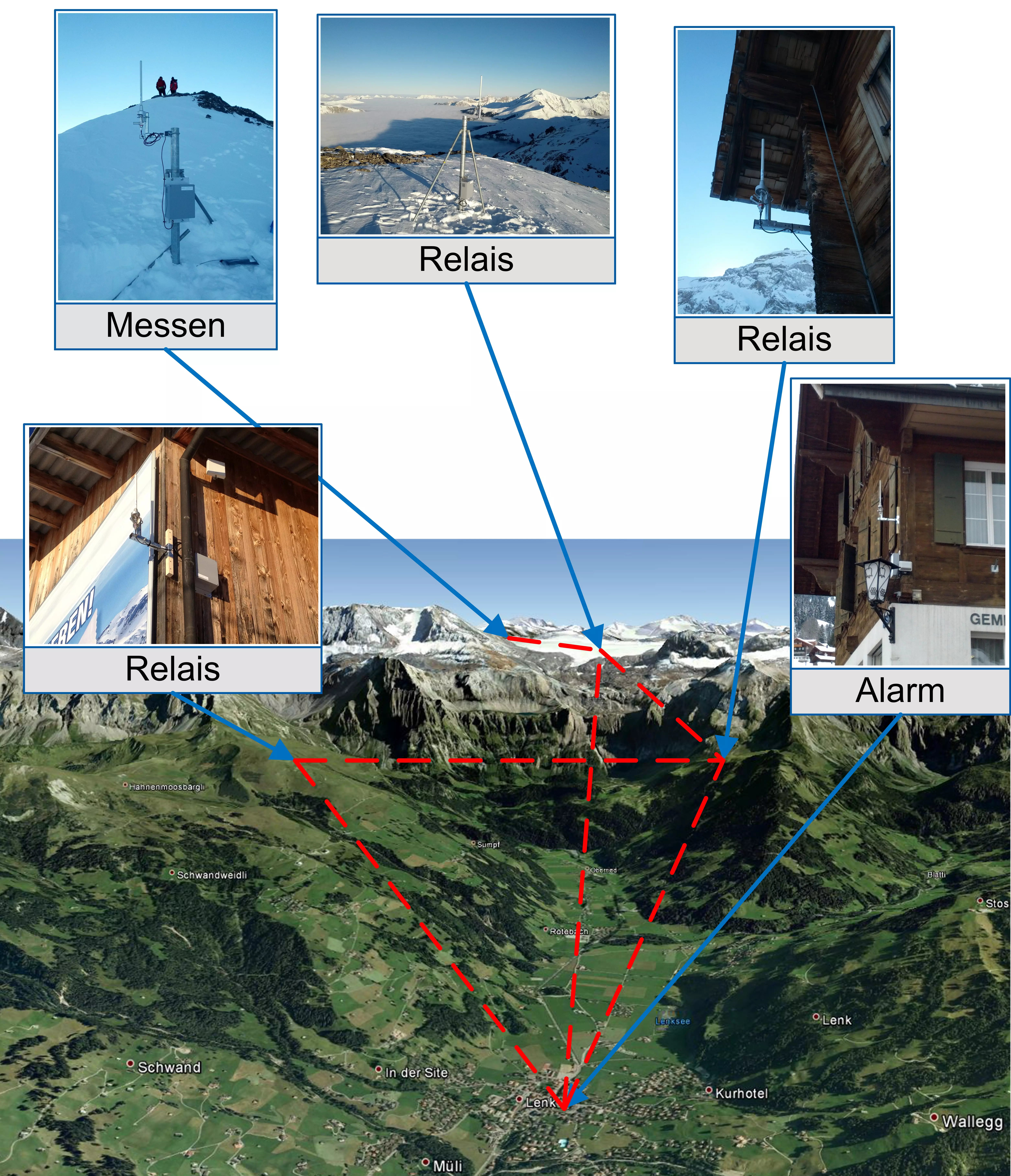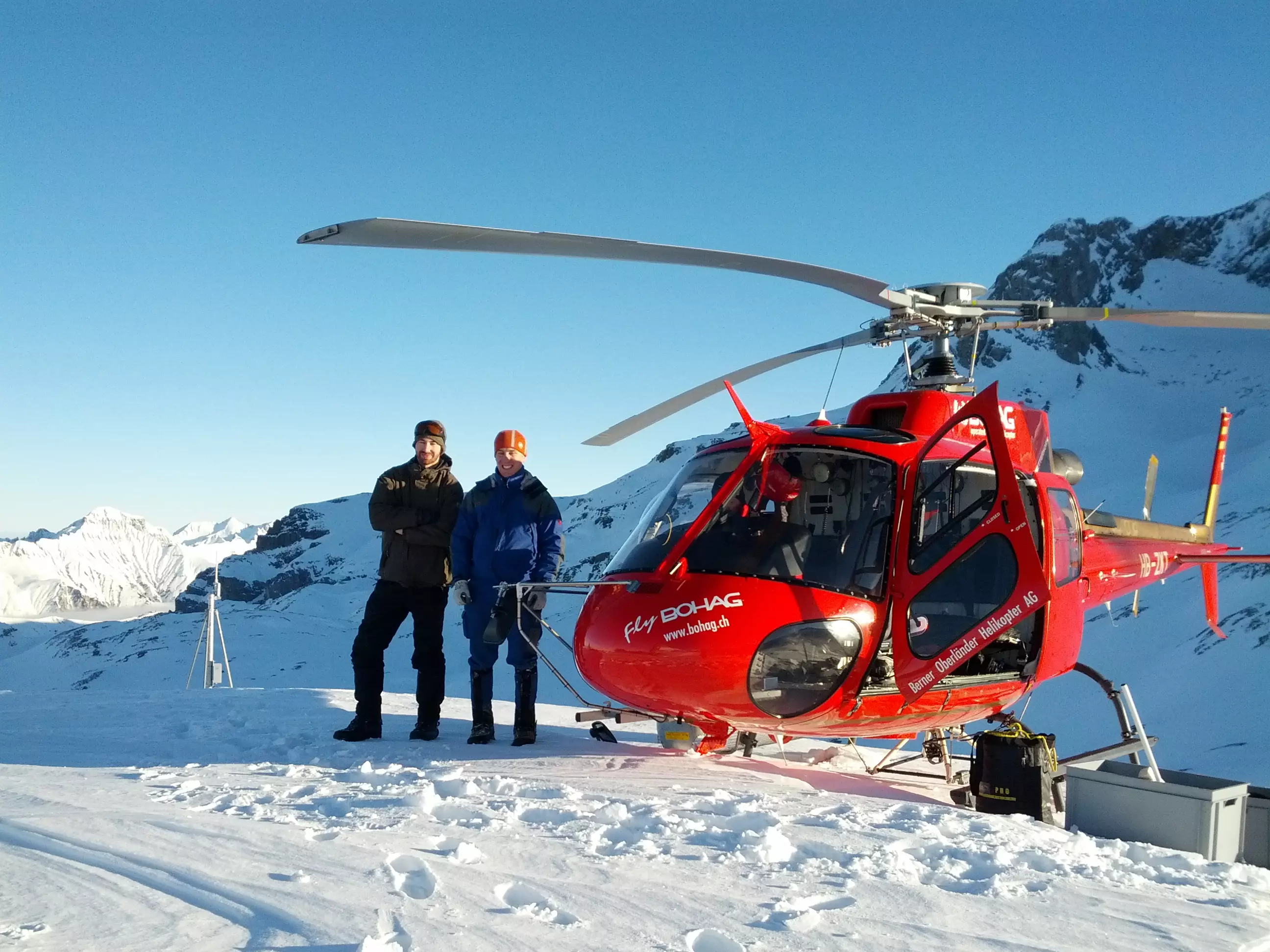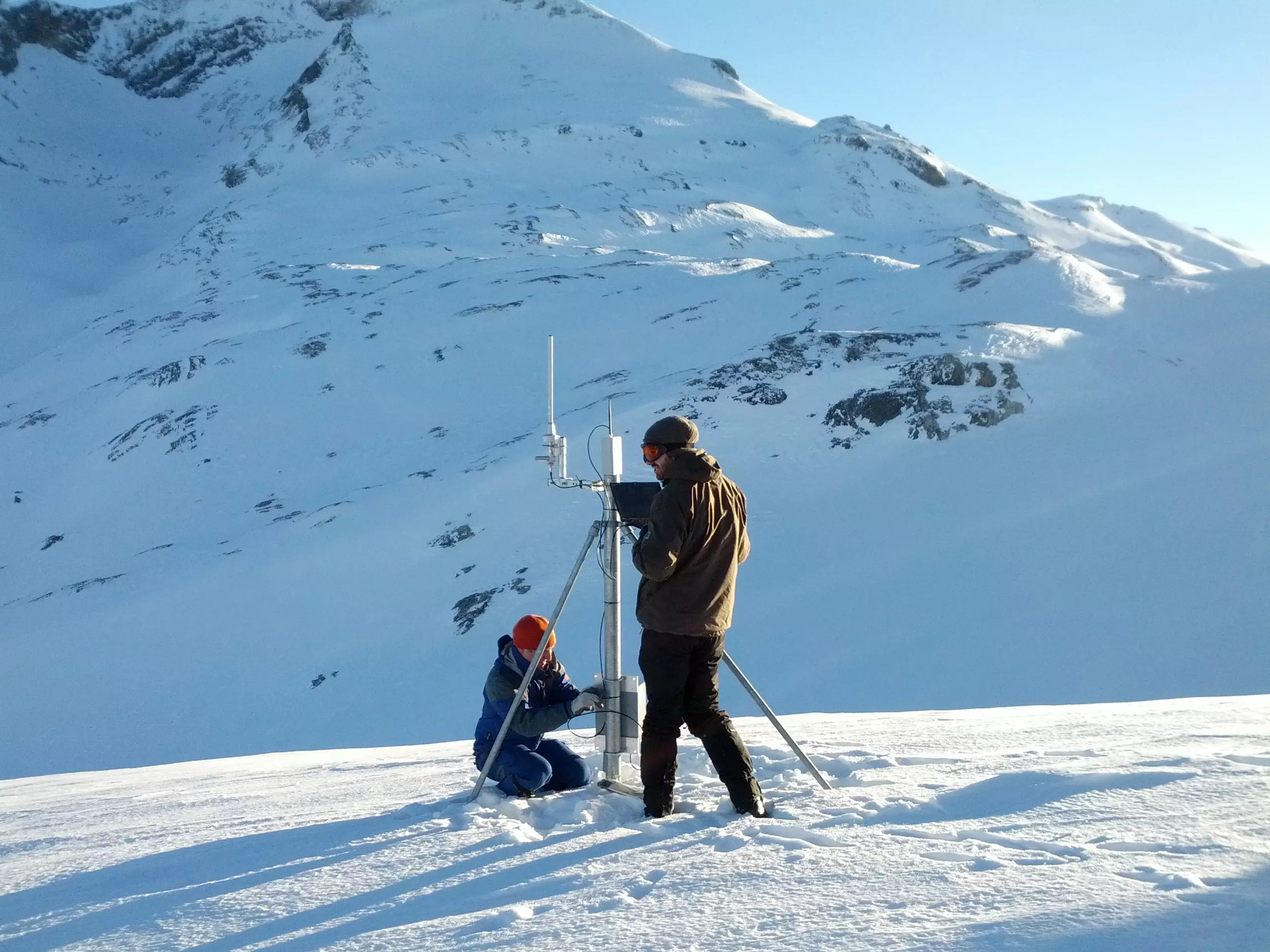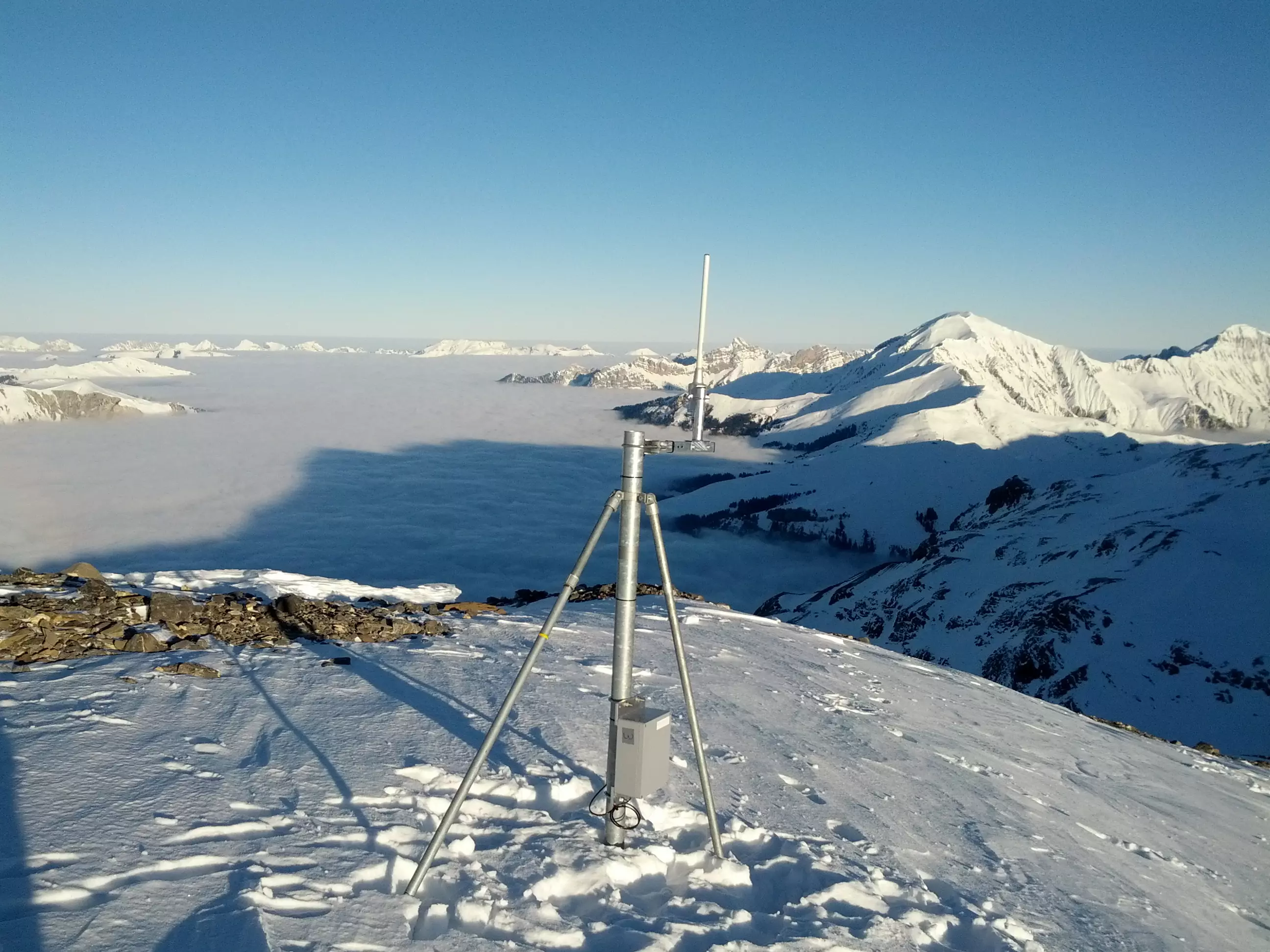Monitoring natural hazards
Radio-based monitoring provides early warning of natural disasters
Landslides, collapsing rock formations and flash floods are common hazards in alpine regions. The time available for warning people exposed to these natural disasters is usually limited. The ZHAW School of Engineering’s Centre for Signal Processing and Communications Engineering (ZSN) has developed a radio-based system which ensures that the alarm gets to its destination.
Protection from natural hazards is a particular priority in the Alps. Monitoring systems of the kind developed by the Zurich-based company Geopraevent offer an alternative to costly physical barriers. The company specialises in the deployment of sensors which are able to provide real-time warnings of falling rock faces or overflowing glacial lakes before they occur. If there is an immediate danger of such an event, a chain of alarms is activated. Roads and tunnels are automatically closed and, in inhabited areas, sirens are sounded – all in the space of a few seconds.
Radio-based system trumps mobile phone network
It is of course in the nature of such hazards that they sometimes occur in places where no electricity supply or mobile telephony connections are available. To address this problem, the ZHAW School of Engineering’s Centre for Signal Processing and Communications Engineering (ZSN) joined forces with Geopraevent to develop a secure radio-transmission system as part of a project supported by Innosuisse (former CTI). As the ZSN’s Roland Küng explains, “The mobile telephony network is often either too weak or dependent on one single transmitter mast, while satellite connections are very expensive. Laying kilometres of cabling is also expensive and the cables can break.” A secure radio connection, on the other hand, with its own licensed channel provides a standalone solution which is less vulnerable to interruptions by third parties or outside events.
“Our solution is designed as a redundant relay system. Information is securely transmitted from one station to the next in a pre-determined sequence.”
Professor Roland Küng, Project Manager, Centre for Signal Processing and Communications Engineering (ZSN)
Chain links up multiple transmitters

Rather than harnessing high-power transmitters to transmit data over long distances, the ZSN has based its system on a whole series of transmissions over short distances. “Our solution is designed as a redundant relay system. Information is securely transmitted from one station to the next in a pre-determined sequence,” says Küng. A further major advantage of this approach is that each individual transmitter requires less energy. “To have sufficient power reserves to be able to function for a whole year, long-distance transmitters need large batteries which no longer function at temperatures below minus 20 degrees,” Küng explains. Because they only operate over short distances and use optimised signal protocols, the transmitters deployed by the ZSN require only small amounts of electricity. These can be provided by one single lithium cell, which supplies sufficient power to enable the transmitter to broadcast a keep-alive signal every five seconds. In addition to communicating the status of each transmitter, these signals also report information such as battery levels and current temperature.
Engineers fly in
Two MSc graduates at the ZSN developed both the communications protocol for the software and the hardware modules for the radio network. Their specifications took account of such factors as the extremely low temperatures prevailing in mountain regions at 3,000 metres above sea level. They also had to ensure that the hardware had a very high degree of operational reliability, given the significant logistical effort required to install and maintain the transmitters in remote terrain. To set up their test system, the engineers flew by helicopter to the various transmitter sites. In order to test the equipment under extreme parameters, this work was carried out in tough winter conditions. The transmission distances were deliberately kept close to each transmitter’s maximum range so that the periodic shutdown of individual transmitters and their automatic rejoining of the network could be tested.

“We are very pleased with the results and with the friendly and professional nature of our collaboration with the ZSN.”
Lorenz Meier, CEO, Geopraevent
Test phase successfully completed
A test version of the ZSN system has been in operation on the Plaine Morte Glacier above Lenk since January 2013. When ice and snow melt, glacial lakes in this area fill up and can overflow beneath the glacier. This results in a rapid increase in water levels down in the valley. Sensors are therefore used to monitor the water levels in the lakes, activating an alarm if they suddenly diminish. The tests carried out in Lenk were successful, demonstrating that the system is reliable in real-life conditions. As Lorenz Meier, Geopraevent’s CEO, puts it “We are very pleased with the results and with the friendly and professional nature of our collaboration with the ZSN.” In addition to municipalities and cantons, Geopraevent’s customers include electricity-generating companies and pipeline operators across the globe.
At a glance
Participating institutes and centres:
Participating degree programme:
Project partner:
Financing: Innosuisse (former CTI)
Project status: completed


